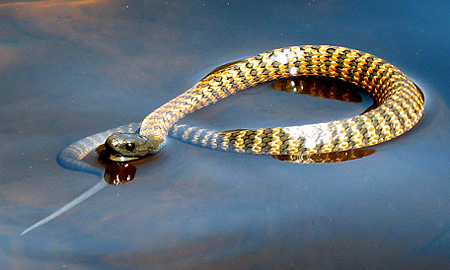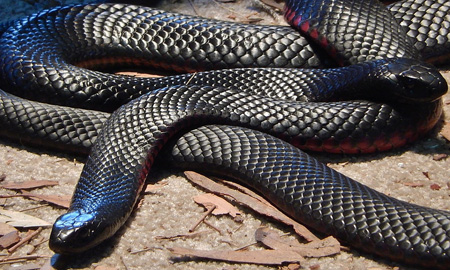Introduction
The Tasmanian tiger snake, medically called Notechis scutatus, is one of Australia's most fascinating reptiles. Discovered mostly in Tasmania and its surrounding islands, this serpent has What to do if bitten by a snake amassed focus not only for its striking look yet additionally for its intricate actions and important role in the community. This article will check out the various elements of the Tasmanian tiger serpent's environment, habits, makeup, and communications with people while giving important details regarding safety measures in situation of a serpent bite.
Whether you're a researcher, a wild animals lover, or simply somebody curious concerning these fascinating animals, this extensive guide guarantees to deliver insights that are both insightful and interesting. So let's start this journey to understand the Tasmanian tiger serpent better!
The Tasmanian Tiger Serpent: An Overview
Physical Qualities of the Tasmanian Tiger Snake
Tiger serpents are defined by their unique coloration and patterns. They normally show a mix of yellow or lotion red stripes on a dark brown or black history-- thus the name "tiger." Adult tiger serpents can mature to approximately 2.1 meters long, although the majority of individuals average around 1.5 meters.
Key Attributes:
- Coloration: Differs from dark brownish to olive eco-friendly with lighter bands. Size: Grownups normally vary from 1.2 to 2.1 meters. Head Shape: Clearly wide with prominent eyes.
Distribution and Environment of the Tasmanian Tiger Snake
https://skillstrainingcollege.com.au/yellow-faced-whip-snake/The Tasmanian tiger serpent mostly inhabits seaside regions, wetlands, marshes, and grasslands in Tasmania. It grows in environments where it can easily access water sources because it is usually discovered near streams or lakes.
Habitat Preferences:
- Wetlands: Suitable for hunting prey like frogs and small mammals. Coastal Areas: Deals bountiful food resources. Grasslands: Offers cover and basking spots.
Understanding Tiger Serpent Behavior
Feeding Behaviors of the Tasmanian Tiger Snake
Tiger snakes are meat-eating and opportunistic feeders. Their diet consists generally of frogs, fish, small creatures, and birds. skillstrainingcollege.com.au They count on their keen eyesight and swift motions for hunting.
Dietary Malfunction:
- Frogs: A primary component due to abundance in wetland habitats. Fish: Frequently caught when swimming in superficial waters. Small Mammals: Sometimes exploit rodents.
Breeding Habits of the Tasmanian Tiger Snake
Tiger serpents have a fascinating reproductive cycle. Mating commonly happens in springtime after emerging from hibernation. Women tiger serpents give birth to live young as opposed to laying eggs, which is somewhat special among reptiles.
Reproductive Cycle:
- Mating Period: Springtime (September to November). Gestation Duration: Approximately three months. Litter Size: Varieties from 20 to 40 child tiger snakes.
Aggression and Defense Mechanisms of the Tasmanian Tiger Snake
Though they can be hostile when threatened, tiger snakes commonly choose to pull back rather than confront risk straight. Their primary defense reaction include biting when cornered or presenting their size through hissing.

Defensive Strategies:

- Hissing Sound: A caution signal showing distress. Bite Feedback: A last hope when retreat options are limited.
Are Tiger Snakes Venomous? Understanding Their Venom
Venom Structure and Effects
Yes! The Tasmanian tiger serpent is venomous. Its poison has neurotoxins that can trigger severe injury and even death if left untreated. The results of a bite can include paralysis, swelling at the bite website, queasiness, and other systemic symptoms.

Venom Attributes:
- Neurotoxic Elements: Impact nerve system functioning. Hemotoxic Impacts: Can result in cells damage.
Common Signs and symptoms Following a Tiger Serpent Bite
Recognizing signs and symptoms without delay is crucial for efficient emergency treatment administration after a serpent bite:
- Severe discomfort at bite site Swelling Nausea or vomiting Difficulty breathing
First Help for Snake Bites: What You Need to Know
Immediate Steps After a Tiger Snake Bite
In situation you encounter a scenario including a tiger snake bite, it's imperative to act swiftly:
Call emergency situation services immediately. Keep the affected limb immobilized in mind level. Remove limited garments or jewelry around the bite site.
Creating Your Snake Bite Emergency Treatment Kit
Having an appropriately equipped first aid package can make all the difference throughout emergency situations:|Product|Purpose|| ------|---------|| Compression plaster|To paralyze arm or leg|| Splint|To support injured area|| Antiseptic wipes|For cleaning wounds|
FAQs Concerning the Tasmanian Tiger Snake
What do infant tiger snakes eat?
Baby tiger serpents mostly feed on small pests and amphibians until they grow large sufficient to search larger prey like frogs or little fish.
How dangerous is a tiger serpent bite?
A tiger snake bite can be very dangerous due to its powerful venom; prompt medical interest is essential for survival.
Where are eastern tiger snakes found?
Eastern tiger snakes populate seaside regions throughout southeastern Australia however are much less common than their Tasmanian counterparts.
What must I do if I see a tiger snake?
Maintain your range; do not attempt to handle it unless you're educated to do so-- most bites take place throughout efforts at capture or mishandling.
Can I make it through without antivenom after being bitten?
While some individuals might endure without antivenom depending upon various factors such as wellness problems and time taken for treatment; seeking prompt medical assistance is always advised as it substantially boosts survival chances.
Are there any type of certain safety measures I ought to take while treking in Tasmania?
Always put on strong boots, remain on significant tracks, avoid tall lawn where presence might be restricted; acquaint yourself with local wild animals prior to going out into nature!
Conclusion
The Tajamanian tiger snake stands for an important part of Australia's rich biodiversity landscape both environmentally as predators and culturally as signs within Australian folklore. Understanding their environment choices together with actions offers understanding into exactly how we can coexist safely while valuing wild animals boundaries-- bearing in mind that understanding leads us in the direction of more secure adventures outdoors!
By staying notified concerning prospective threats such as envenomation from bites while additionally taking preventive measures makes certain positive experiences when coming across these interesting creatures!
In conclusion, whether you're interested by their striking appearance or mesmerized by their intricate actions-- the Tasmanian tiger snake undoubtedly is worthy of recognition beyond simple attraction-- it encapsulates nature's appeal intertwined intricately within our ecosystems!